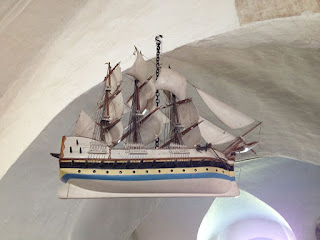We've begun and ended each day of the conference with stories. This morning I had planned to listen to Mary Cooper tell The Ark and the Tent. I was really looking forward to it... But I lingered too long over breakfast (and/or, lingered too long in getting out of bed so had less time at breakfast), and by the time I got to her room there was no room left. At least six of us were turned away.
So, I joined another circle and listened to Rosemary Lavelle tell The Great Family. We commented during the Wondering on how smoothly she managed the 'sleight of hand' involved in 'burying' the bodies of those who die (first Sarah and later Abraham). And some people shared ways in which they had found those deaths to be an important, beautiful, helpful part of the story.
The story is about death and also about birth. So it was truly lovely to have in our midst a baby, who occasionally gurgled and cooed. His mother said afterwards she had worried he might disturb, but for me, it added to the story, and when we were asked about our favorite part, I said mine was having a baby present and audible for this tale.
Afterwards, we listened to a plenary lecture by one of our organisers, Rune Øystese. He found himself in that difficult position of having less time than he'd planned for, but he squeezed a lot of worthwhile information into that time, talking about stories - stories in education, Bible stories, myths or grand narratives, and the ways these overlap.
An idea posed early on in the talk was this: When we use a story to illustrate a point we may close the story. That is to say, we may allow it only one meaning or moral, sapping its energy.
It has certainly been my experience at this conference that it has been eye-opening (as it so often has been in the past as well) to hear and see the many different ways people respond to one and the same story. A myriad of different parts they liked best, the breadth of thoughts sparked by a parable, and yet the way this discussion of varied viewpoints can bring us together as a community sharing a common story.







